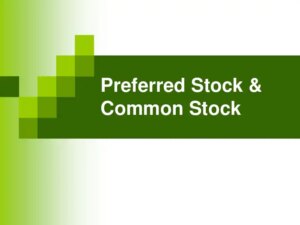So, depreciation expense would decline to $5,600 in the second year (14/120) x ($50,000 – $2,000). $3,200 will be the annual depreciation expense for the life of the asset. To see how the calculations work, let’s use the earlier example of the company that buys equipment for $50,000, sets the salvage value at $2,000 and useful life at 15 years. The estimate for units to be produced over the asset’s lifespan is 100,000. The four methods allowed by generally accepted accounting principles (GAAP) are the aforementioned straight-line, declining balance, sum-of-the-years’ digits (SYD), and units of production. Accumulated depreciation totals depreciation expense since the asset has been in use.
Accumulated depreciation is used to calculate an asset’s net book value, which is the value of an asset carried on the balance sheet. The formula for net book value is cost an asset minus accumulated depreciation. Watch this short video to quickly understand the main concepts covered in this guide, including what accumulated depreciation is and how depreciation expenses are calculated. When you sell an asset, the book value of the asset and the accumulated depreciation for that asset are both removed from the balance sheet. Since the original cost of the asset is still shown on the balance sheet, it’s easy to see what profit or loss has been recognized from the sale of that asset. Most capital assets (except land) have a residual value, sometimes called “scrap value” or salvage value.
Accumulated Depreciation
For example, the machine in the example above that was purchased for $500,000 is reported with a value of $300,000 in year three of ownership. Again, it is important for investors to pay close attention to ensure that management is not boosting book value behind the scenes through depreciation-calculating tactics. But with that said, this tactic is often used to depreciate assets beyond their real value. Let’s say you have a car used in your business that has a value of $25,000. It depreciates over 10 years, so you can take $2,500 in depreciation expense each year. Subsequent results will vary as the number of units actually produced varies.

The two balances have implications for financial reporting and for taxes. Accumulated depreciation is the cumulative amount of depreciation that has piled up since the initiation of depreciation for each asset. This information is stored in a contra asset account, which effectively reduces the balance of the fixed asset account with which it is paired. After the 5-year period, if the company were to sell the asset, the account would need to be zeroed out because the asset is not relevant to the company anymore. Therefore, there would be a credit to the asset account, a debit to the accumulated depreciation account, and a gain or loss depending on the fair value of the asset and the amount received.
Annual Membership
For example, if a company purchased a piece of printing equipment for $100,000 and the accumulated depreciation is $35,000, then the net book value of the printing equipment is $65,000. The simplest way to calculate this expense is to use the straight-line method. The formula for this is (cost of asset minus salvage value) divided by useful life. The extra amounts of depreciation include bonus depreciation and Section 179 deductions. Since land and buildings are bought together, you must separate the cost of the land and the cost of the building to figure depreciation on the building. When discussing depreciation, two more accounting terms are important in determining the value of a long-term asset.

This value is what the asset is worth at the end of its useful life and what it could be sold for when the company has finished with it. Quest Adventure Gear buys an automated industrial sewing machine for $60,000, which it expects to operate for the next five years. Based on the 60-month useful life of the machine, Quest will charge $12,000 of this cost to depreciation expense in each of the next five years. If an asset is sold or disposed of, the asset’s accumulated depreciation is removed from the balance sheet. Net book value isn’t necessarily reflective of the market value of an asset. Tracking the depreciation expense of an asset is important for reporting purposes because it spreads the cost of the asset over the time it’s in use.
Introduction to Business
Depreciation expense is recorded on the income statement as an expense and represents how much of an asset’s value has been used up for that year. Depreciation expense is the amount that a company’s assets are depreciated for a single period (e.g,, quarter or the year). Accumulated depreciation, on the other hand, is the total amount that a company https://kelleysbookkeeping.com/sg-a-expense-selling-general-administrative/ has depreciated its assets to date. Depreciation is charged to record the usage cost of the asset with the benefit gained from its use. And the accumulated depreciation is the total of all the recorded depreciation charged on the asset on a specific date. Subsequent years’ expenses will change as the figure for the remaining lifespan changes.
IZEA Reports Q1 2023 Revenue of $8.7 million – Marketscreener.com
IZEA Reports Q1 2023 Revenue of $8.7 million.
Posted: Mon, 15 May 2023 07:00:00 GMT [source]
John Cromwell specializes in financial, legal and small business issues. Cromwell holds a bachelor’s and master’s degree in accounting, as well as a Juris Doctor. In other words, depreciation spreads out the cost of an asset over the years, allocating how much of the asset that has been used up in a year, until the asset is obsolete or no longer in use. Without depreciation, a company would incur the entire cost of an asset in the year of the purchase, which could negatively impact profitability. You can also accelerate depreciation legally, getting more of a tax benefit in the first year you own the property and put it into service (begin using it).
AccountingTools
Unlike a normal asset account, a credit to a contra-asset account increases its value while a debit decreases its value. However, both pertain to the “wearing out” of equipment, machinery, or another asset. They help state the true value for the asset; an important consideration when making year-end tax deductions Accumulated Depreciation And Depreciation Expense and when a company is being sold. Depreciation expense, on the other hand, is the allocated portion of the cost of a company’s fixed assets that is appropriate for the period. Depreciation expense is recognized on the income statement as a non-cash expense that has reduced the company’s net income.
How are accumulated depreciation and depreciation expense related?
Depreciation expense is the cost of an asset that has been depreciated for a single period, and shows how much of the asset's value has been used up in that year. Accumulated depreciation is the total amount of depreciation expense that has been allocated for an asset since the asset was put into use.
Put another way, accumulated depreciation is the total amount of an asset’s cost that has been allocated as depreciation expense since the asset was put into use. Depreciation is used on an income statement for almost every business. It is listed as an expense, and so should be used whenever an item is calculated for year-end tax purposes or to determine the validity of the item for liquidation purposes. Financial analysts will create a depreciation schedule when performing financial modeling to track the total depreciation over an asset’s life. The total value of all the assets of a company is listed on the balance sheet rather than showing the value of each individual asset.
What is Depreciation Expense?
You can count it as an expense to reduce the income tax your business must pay, but you didn’t have to spend any money to get this deduction. This depreciation expense is taken along with other expenses on the business profit and loss report. As the asset ages, accumulated depreciation increases and the book value of the car decreases.
- An asset’s original value is adjusted during each fiscal year to reflect a current, depreciated value.
- To determine attributable depreciation, the company assumes an asset life and scrap value.
- Therefore, in any form of business, it is not a luxury but a need to keep meticulous records of all money coming in and money going out.
- For example, factory machines that are used to produce a clothing company’s main product have attributable revenues and costs.
- For example, if you use your car 60% of the time for business and 40% for personal, you can only depreciate 60%.
- Depreciation expense is referred to the depreciation of one period, and accumulated depreciation is referred to the aggregate depreciation of all the periods during which the asset is held by the company.
Also, fixed assets are recorded on the balance sheet, and since accumulated depreciation affects a fixed asset’s value, it, too, is recorded on the balance sheet. Accumulated depreciation is a measure of how much wear and tear an item has endured over time. But the amount of an asset’s cost allocated and reported at the end of each reporting period is known as the depreciation expense. Working closely with a certified public accountant while you compile financial records and books of account is essential for ensuring accurate reporting. To illustrate, let’s assume that a retailer purchases new display racks at a cost of $84,000. This asset is estimated to have a useful life of 7 years (84 months) and no salvage value at the end of 7 years.
Difference between the accumulated depreciation and the depreciation expense
Some assets are short-term, used up within a year (like office supplies). Long-term assets are used over several years, so the cost is spread out over those years. Short-term assets are put on your business balance sheet, but they aren’t depreciated. For accounting purposes, the depreciation expense is debited and the accumulated depreciation is credited.
- Accumulated depreciation is a measure of how much wear and tear an item has endured over time.
- Thus, after five years, accumulated depreciation would total $16,000.
- For accounting purposes, the depreciation expense is debited and the accumulated depreciation is credited.
- It is calculated by summing up the depreciation expense amounts for each year.